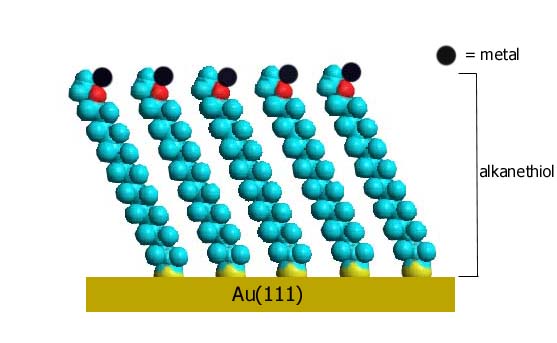Chemical Imaging with Cluster Ion Beams and Lasers
This is a new program aimed toward exploiting recent developments in mass spectrometry imaging. With this tool, it will be possible to determine the chemical composition of the near surface region of a variety of materials with high molecular specificity and with nanometer scale lateral resolution.
The basic idea is to utilize an energetic cluster ion beam focused to a well-defined point on the target. Desorbed neutral molecules are ionized by a suitable light source that yields as little photo-induced fragmentation as possible. These secondary molecular ions are then detected by time-of-flight mass spectrometry and an image is created by scanning the ion beam over an appropriate area. This new instrumentation will be utilized in a number of fundamental studies aimed at determining the chemical composition of aerosol particles associated with the environment, and will emphasize the study of biological particles at the single cell level to provide insight into the mechanism of how algae produce organic molecules that could be used as biofuels.
There are several aspects associated with these studies that provide a unique opportunity for the development of this materials characterization tool. First, cluster ion sources exhibit desorption yields that are many orders of magnitude higher than those reported previously using atomic projectiles. Moreover, as part of the research, it is proposed that cluster sources, in particular C60, yield desorbed molecules with greatly reduced internal energy. This property is particularly important for the post-ionization experiments needed to gain the sensitivity necessary for high lateral resolution measurements. Finally, these cluster sources exhibit the remarkable property of allowing molecular desorption without the buildup of chemical damage on the sample surface.
With this property, characterization of the first few microns of the sample surface becomes feasible, opening the possibility of 3-dimensional chemical imaging. Three different methods of photoionization will be explored. The first approach will utilize a high power, high repetition rate femtosecond pulsed laser system for multiphoton ionization using visible light. A second approach will utilize mid-IR femtosecond pulses which have recently been shown to exhibit high photoionization efficiency, presumably since the slower rate of field oscillation allows more time for tunnel ionization. And thirdly, photoionization will be implemented with tunable VUV radiation.
This important part of the project will be a collaborative effort at the Advanced Light Source at Lawrence Berkeley laboratory and will be part of the emerging nano-imaging facility being constructed at the Chemical Dynamics Beamline. All of these photoionization methods will greatly benefit from the fact that molecules can be desorbed with lower internal energy with the C60 cluster source.
There is a range of broader impacts associated with the proposed research program. The emerging popularity of mass spectral imaging techniques is evidenced by the strong industrial response to the early publications arising from this research. Three corporate research agreements with pharmaceutical companies to study biofilms on contact lenses and diffusion of small drug molecules through skin have been initiated. At least 6 other research labs of various types are utilizing the facilities currently in place. Collaborative work with a British company has resulted in commercial development of both a Au and a C60 cluster ion source. The laboratory was sought out by two companies in Japan to promote developments in cluster ion mass spectrometry through use of donated equipment or via lecture tours. The students working on this research are receiving national attention. Recently, two graduate students joined DOE laboratories as permanent employees, another graduate student won a summer fellowship from the American Chemical Society, and a third won a prestigious lecturing award from an international conference.

